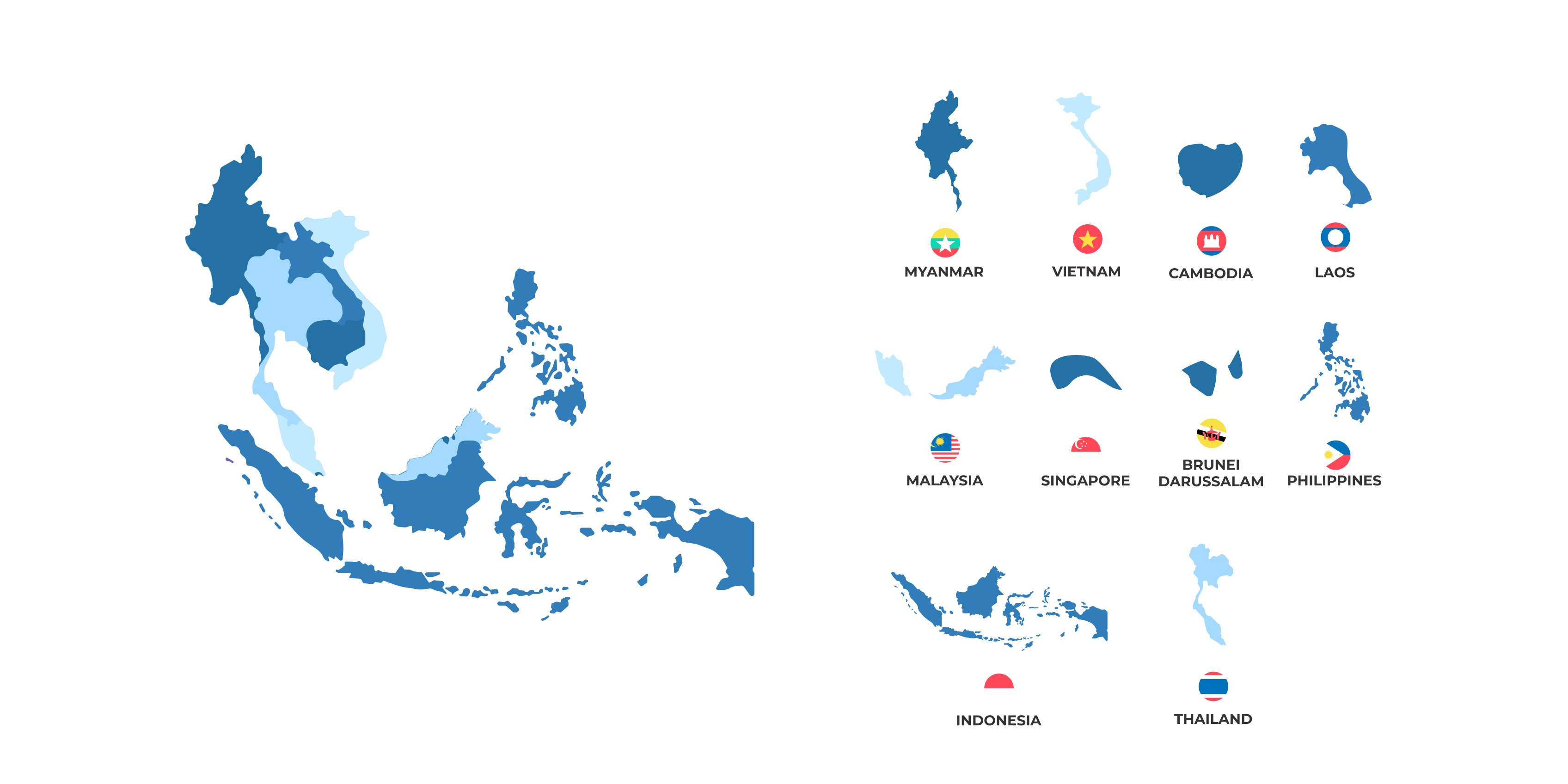
Are Countries in Southeast Asia Ready for Digitalization?
By Ranggi R.
Published on July 14, 2023
As we can see, digitalization has succeeded in connecting one individual to another. Someone in Asia can directly contact their friends in South America.
Besides, organizations were used to being unfamiliar with data, cybersecurity, cloud computing, or other related things. You name it.
Now, all those mentioned things are implemented. Every business cannot be run without one of them.
This phenomenon is proof that we live in a whole new era.
The Forefront of Digital Named Asia
Most people think that countries in Europe or North America are the most developed in the world. Facts speak otherwise. They are Asian countries.
Asia undeniably embraces the digital revolution. Only some realize that Asia’s percentage of innovation in the digital sector is around 28% of growth in per capita GDP since the 1990s, according to Asia Development Bank (ADB).
Asia has been preparing for digital transformation for a long time. Today, countries in Asia are also leading the way in future technologies and new realities.
Artificial intelligence (AI), Augmented Reality (AR) and autonomous driving are just a few of the inventions that have been implemented in this area.
Not to mention their business of technology and internet-related services. Take a look at China. Alibaba, Tencent, and Baidu are companies that provide a wide range of services for customers not only in China but also in other countries.
When it comes to Asia, it always relates to diversity. So does the digitalization landscape. With different regulations and readiness, countries also have different ways of adopting and adapting.
Digitalization in Southeast Asian Countries
The countries of Southeast Asia surprised everyone. Suddenly, digitalization in Southeast Asia increased massively.
Three Southeast Asian countries, Singapore, Indonesia, and Philippines, have become the top two countries in e-commerce retail growth, with the percentage of 36%, 34% and 25.9% per year, according to research by eMarkerter.
Digitalization in Indonesia
In Indonesia, this can be proven by Go-Jek which offers services including ride-hailing, logistics and digital payments. This technology company has had a significant impact on changing Indonesian habits.
These are three main Go-Jek’s functions and how it swifts Indonesian culture:
- Ride-hailing: Indonesian citizens can ride motorcycles and cars through the Go-Jek application. Which led to a shift in traditional transportation habits.
- Food delivery: Go-Jek with its feature called GoFood has transformed the way Indonesians order and receive food. It allows people to order food from everywhere at any time through an application.
- Digital payments: Go-jek’s feature, GoPay, allows its users to make cashless payments for various services: Transportation, food delivery, or other merchants.
From the facilities provided, Go-Jek plays a vital role in Indonesia’s digital transformation.
Digitalization in Singapore
When it comes to e-commerce platforms, Shopee is the most famous among others. Here are some ways Shopee can impact digital transformation in Singapore.
- Online shopping: Shopee is providing a user-friendly online shopping platform, hence it embraces the online shopping experience. So Singaporeans can easily buy goods including fashion, electronics, and more with the application.
- Flash sales and deals: Shopee’s promotional campaigns such as flash sales, daily sales, and free vouchers has created a bargain-hunting culture among Singaporean consumers. With attractive discounts and limited offers, customers get more excited and demand to shop.
- Cashless payments: Shopee payments is integrated with popular digital payment methods such as credit/debit/ or mobile wallets. The shift from traditional transactions to cashless transactions has changed the online habits of Singaporeans.
Overall, Shopee has significantly shaped Singaporean culture to become more digital. This has changed the way Singaporeans shop in their daily lives.
Digitalization in Philipines
The Philippines has made a significant impact on the job hiring process. An app called Kalibrr, influences the digital transformation of Filipino culture.
- Online job search: By providing an online platform, job seekers can search for job opportunities from mobile phones at any time. It has made it efficient and more accessible for Filipinos to seek new jobs.
- Digital recruitment: Kalibrr app is allowed employees to post job vacancies, review applications, and conduct interviews online. It can reduce the need for physical paperwork and create a faster recruitment process.
- Remote work opportunities: Promoting remote work in the Philippines, Kalibrr has contributed to the adoption of flexible work. It is relevant to the trend of ‘work from everywhere’.
The Philippines is also changing its traditional culture into digital culture. To be more effective, efficient, and affordable.
Transformation Aspect
The phenomenon of digital transformation emerged in Southeast Asia with two most important aspects, such as:
- COVID-19
The pandemic is truly a blessing in disguise.
60 million people in the region became online consumers during the pandemic, according to Nikkei Asia. There is significant growth mostly in sports equipment and grocery items.
It is safe to say COVID-19 has accelerated the technology itself.
- Social Media
Southeast Asia is a favorite region for social media.
Philippines has the most time spent on social media (4 hours and 8 minutes per day) in the Asia-Pacific region, followed by Indonesia (3 hours and 20 minutes per day); Malaysia (3 hours and 2 minutes per day) and Thailand (2 hours and 55 minutes per day) in the year 2021, according to Statista.
You know where all these countries are from.
Conclusion
Like the rest of Asia, digitization is also reshaping Southeast Asia. Even more advantageous is the fact that people in this region have opportunities for business, everyday life, and employment.
In other words, Southeast Asia is a compatible region in terms of digital transformation.


